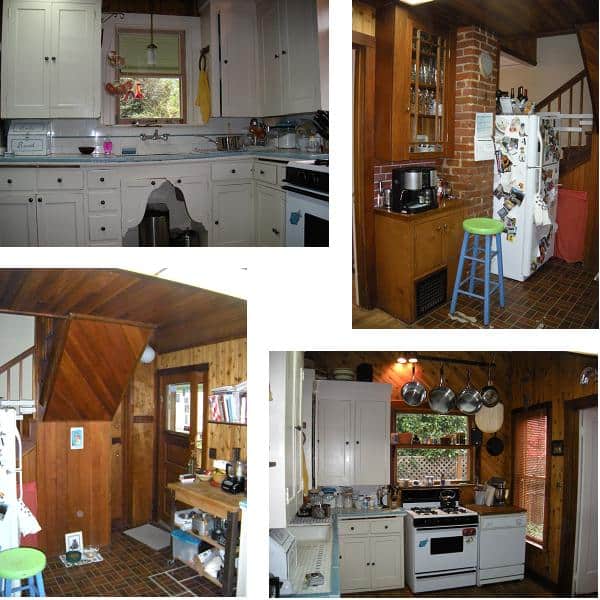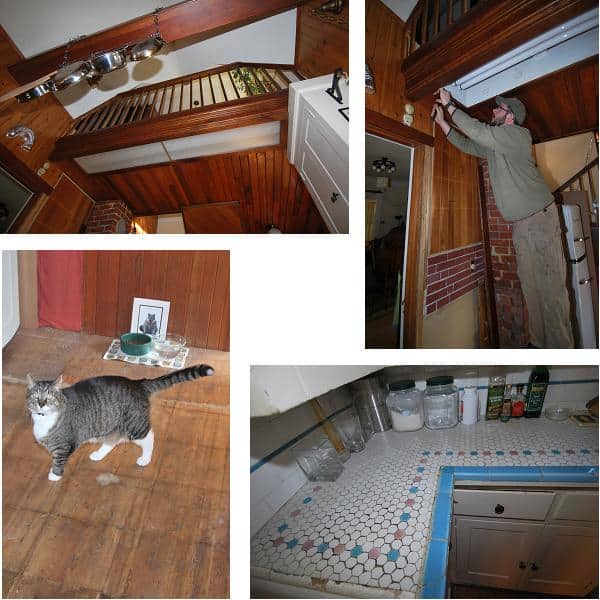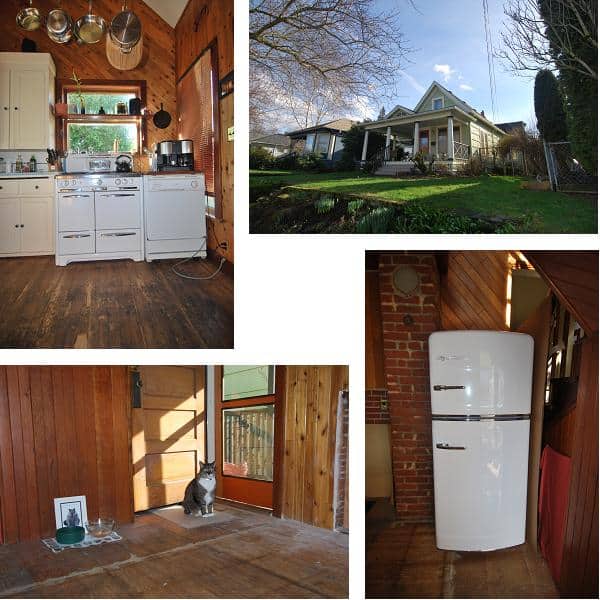 Nate and Molly have a wonderful 1905 home. They consider themselves stewards of this wonderful historic resource, and wish to honor the interesting story that this home has to tell. Initially, they did not know what their options were other than what is so commonly heard throughout the media…. which is “rip it all out to the studs and put in the latest kitchen style… Make it personal to you!” This approach to kitchens runs counter to the preservation ethic of conserving historic building fabric (50 years or older). It creates a state of “cognitive dissonance” with the rest of a historic building, unnecessarily puts huge amounts of building materials in the waste stream, and costs homeowners tens of thousands of dollars unnecessarily. Historic kitchens can be repaired with creative solutions and made to contend with contemporary demands.
Nate and Molly have a wonderful 1905 home. They consider themselves stewards of this wonderful historic resource, and wish to honor the interesting story that this home has to tell. Initially, they did not know what their options were other than what is so commonly heard throughout the media…. which is “rip it all out to the studs and put in the latest kitchen style… Make it personal to you!” This approach to kitchens runs counter to the preservation ethic of conserving historic building fabric (50 years or older). It creates a state of “cognitive dissonance” with the rest of a historic building, unnecessarily puts huge amounts of building materials in the waste stream, and costs homeowners tens of thousands of dollars unnecessarily. Historic kitchens can be repaired with creative solutions and made to contend with contemporary demands.
I met Nate and Molly following one of my presentations at the AHC, “The Evolution of the Modern Kitchen”. They approached me after my talk and told me they were considering removing their 1920’s and 1970’s kitchen elements and going with contemporary cabinetry and appliances. Nate needed a more functional work space and their 1920’s cabinetry, tile, and sink were very tired and worn. Molly told me that most of the people they had talked to about their kitchen recommended a total remodel. But she wanted to preserve the 1920’s cabinetry. Even in its current state, the cute little 1920’s cabinets had a lot of charm and needed be saved.
 They also told me that they had a very limited budget for this project so whatever they did would need to be done in phases over a period of time. So they were also trying to figure out how to make their 1920’s and 1970’s elements look better together, at least for the time being. After hearing my presentation on the importance of saving and working with historic kitchen fabric, Nate & Molly wanted to consider what alternatives there were to demolition. We began to discuss the possibilities and I introduced them to Mike Edeen, a carpenter, and Matthew Roman, a building designer; both highly skilled in preservation work. All together, we worked on a plan that would save and restore historic fabric, meet the functionality needs, and work within the budget.
They also told me that they had a very limited budget for this project so whatever they did would need to be done in phases over a period of time. So they were also trying to figure out how to make their 1920’s and 1970’s elements look better together, at least for the time being. After hearing my presentation on the importance of saving and working with historic kitchen fabric, Nate & Molly wanted to consider what alternatives there were to demolition. We began to discuss the possibilities and I introduced them to Mike Edeen, a carpenter, and Matthew Roman, a building designer; both highly skilled in preservation work. All together, we worked on a plan that would save and restore historic fabric, meet the functionality needs, and work within the budget.
Mike Edeen started the restoration work by removing a 70’s florescent light. Nate and Molly’s kitchen ceiling opens into a loft, a feature they really enjoy. The goal is to restore the 1920’s cabinetry, create some additional new cabinetry and work surfaces that provide Nate a functional work space, incorporate a dishwasher, install more attractive lighting, and incorporate a period appropriate flooring material (the floor is a mix of fir and plywood). They also plan to address the 70’s natural wood paneling, but it is not in their budget for the initial work. Nate and Molly’s cat, “Big Kitty”, supervises all work being done.
 Initially, Nate wanted to go with contemporary appliances. However, once he learned about the virtues of vintage appliances he became open to other options. Nate and Molly ended up with a FABULOUS Wedgewood stove that was offered on eBay, and cost them just $450! A vintage stove can make all the difference in adding charm to a kitchen. Nate and Molly considered a vintage fridge as well, but decided they needed more freezer space than what vintage models could provide. So, I recommended they look into the vintage style “Big Chill” line of refrigerators. Since they needed to make their budget go as far as possible, I also recommended they look into getting a “scratched or dented” model. They did, and they ended up saving a substantial amount on a Big Chill that has a tiny scratch on it.
Initially, Nate wanted to go with contemporary appliances. However, once he learned about the virtues of vintage appliances he became open to other options. Nate and Molly ended up with a FABULOUS Wedgewood stove that was offered on eBay, and cost them just $450! A vintage stove can make all the difference in adding charm to a kitchen. Nate and Molly considered a vintage fridge as well, but decided they needed more freezer space than what vintage models could provide. So, I recommended they look into the vintage style “Big Chill” line of refrigerators. Since they needed to make their budget go as far as possible, I also recommended they look into getting a “scratched or dented” model. They did, and they ended up saving a substantial amount on a Big Chill that has a tiny scratch on it.
Nate and Molly have started on their Kitchen Restoration/Renovation journey. They are being thoughtful, responsible, and future generations will appreciate their efforts. They are creating a work of beauty that will truly add value and charm to their historic home and honors the story it has to tell. And they are doing all of this on a modest budget.